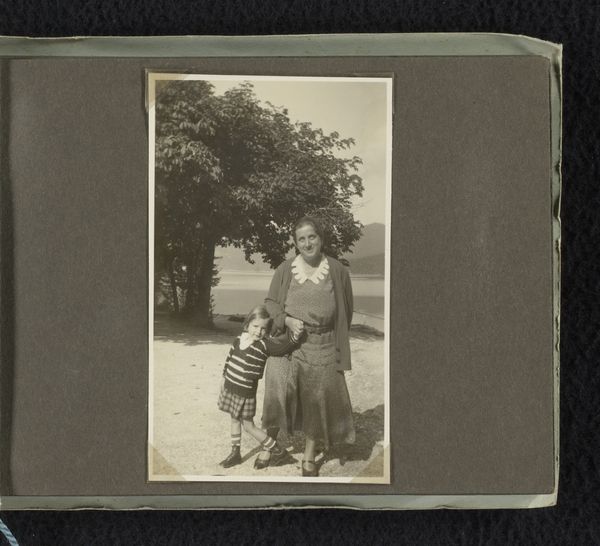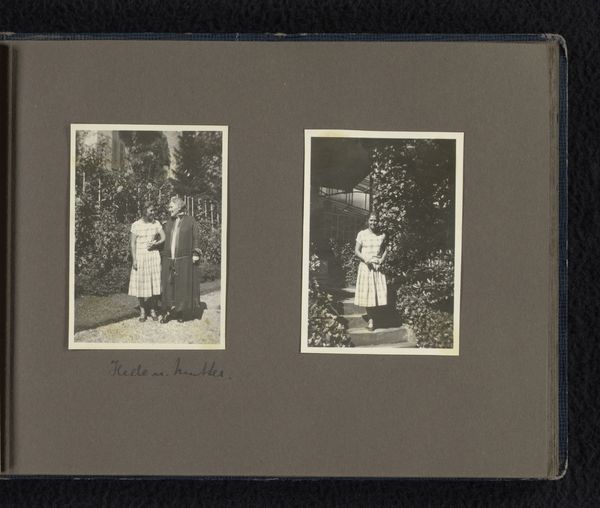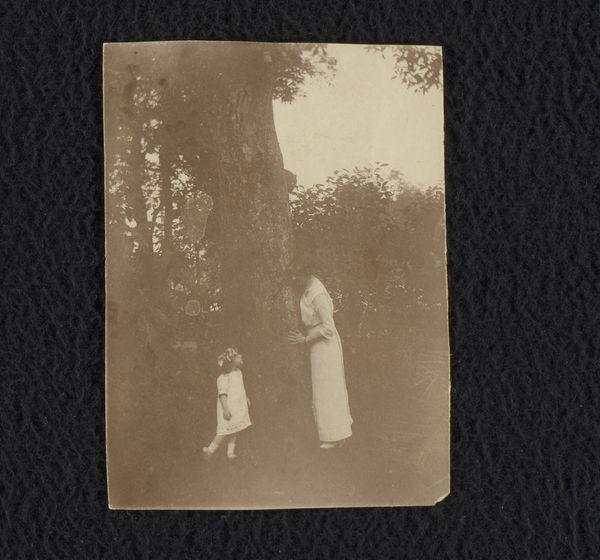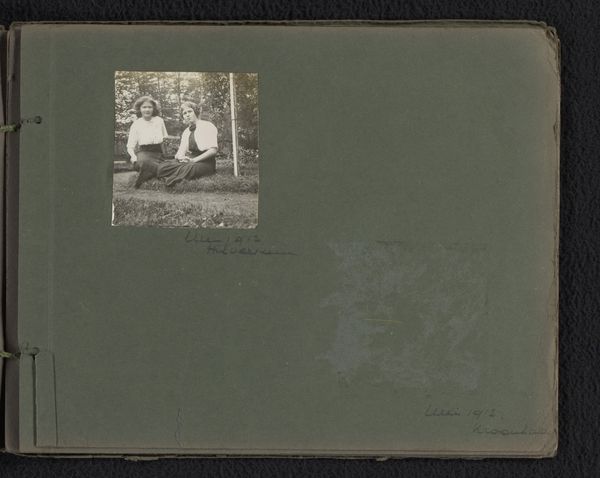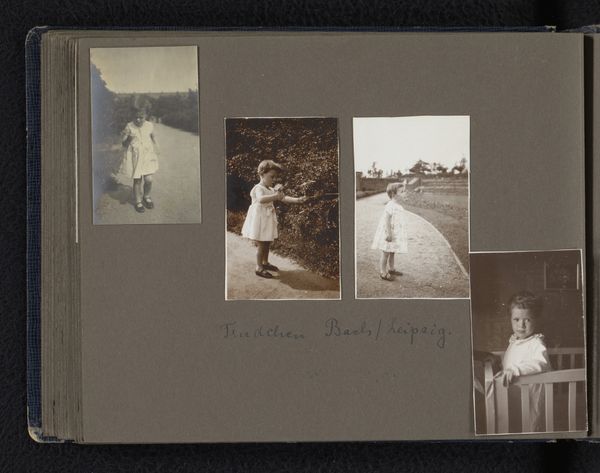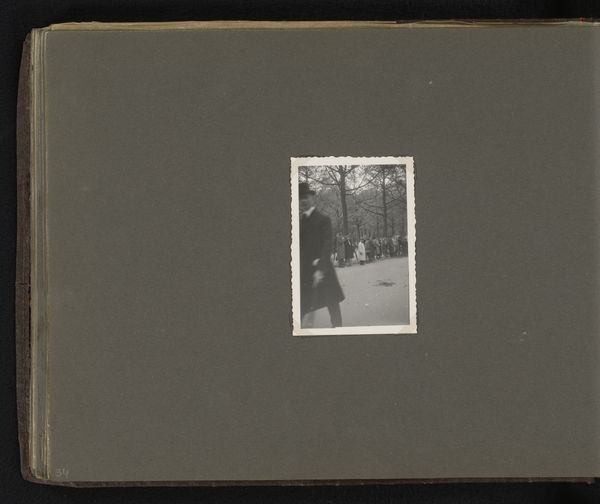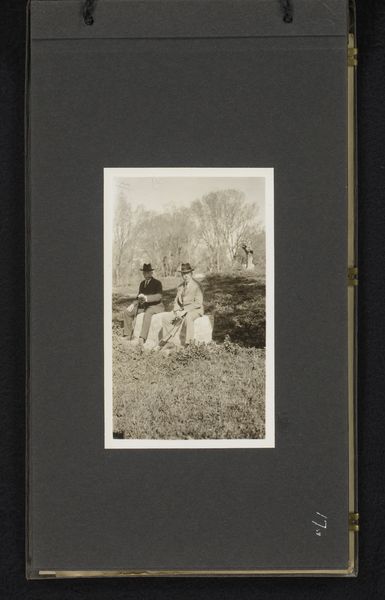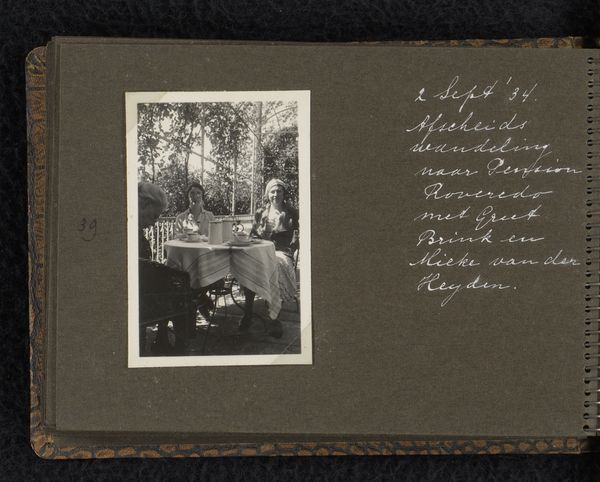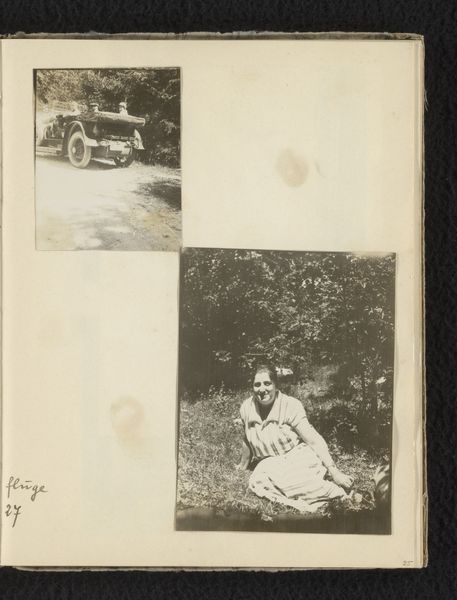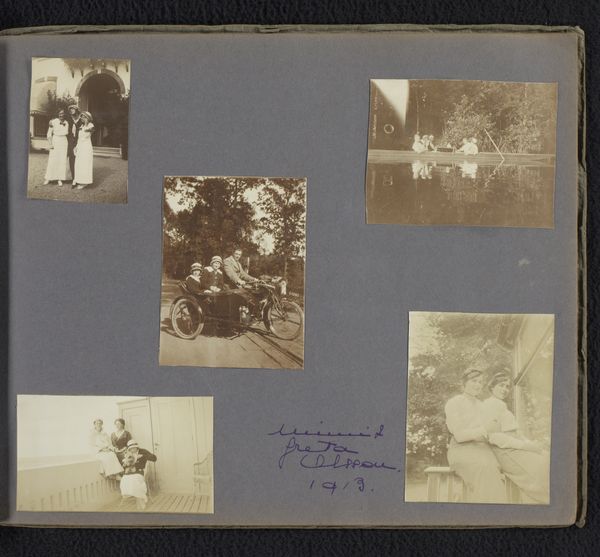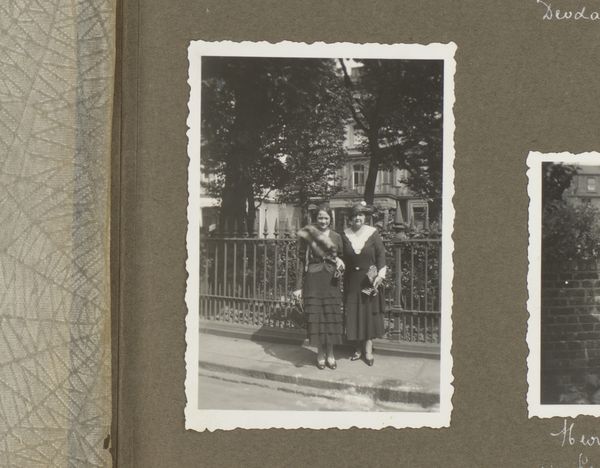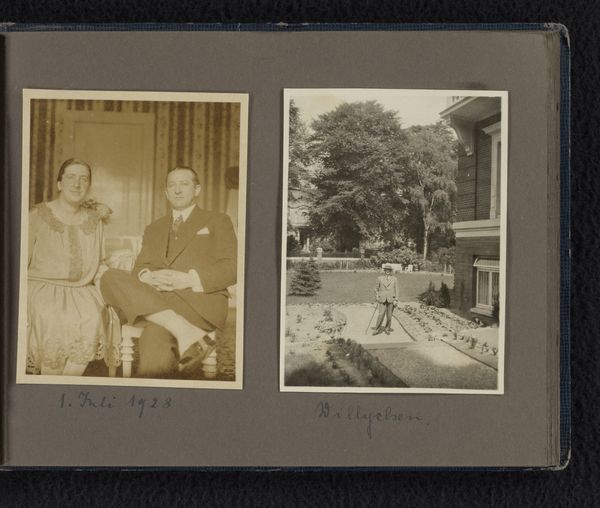
photography
#
portrait
#
type repetition
#
aged paper
#
still-life-photography
#
homemade paper
#
paper non-digital material
#
pale palette
#
reduced colour palette
#
muted colour palette
#
white palette
#
paper texture
#
photography
#
nude colour palette
#
group-portraits
#
realism
Dimensions: height 70 mm, width 46 mm
Copyright: Rijks Museum: Open Domain
Editor: This is an untitled photographic group portrait of three women on a bench, potentially dating from between 1934 and 1939. The grayscale palette gives the image a strong vintage feel. I'm struck by how formally the women are posed, yet there’s an undeniable casualness to the setting. What echoes do you hear when you see this piece? Curator: It evokes the powerful legacy of familial imagery and social representation embedded within portraiture, especially in times of change. Each element in this photograph carries a quiet significance. The bench, for instance, symbolizes shared moments and generational bonds. Do you notice anything particular about the women's placement on it? Editor: They seem to be placed carefully in relation to each other, almost like pieces in a symbolic tableau. There's a visible age range from left to right. Is there a reading in how the photograph communicates social status or personal narratives through symbols? Curator: Precisely! Consider their attire. While understated, the clothes suggest a desire to present themselves in a particular light, representative of middle-class values during a period of significant socio-political shifts. Clothing becomes a symbolic language through which they claim belonging and self-worth. Also, how do you read their expressions? Editor: I find them hard to decipher! They each appear self-aware, trying to look relaxed, almost stoic. There's a controlled sense of dignity. Curator: Indeed. It prompts me to ponder about memory, preservation, and how these images were meant to be viewed within the family structure versus how we interpret them today. Every inclusion becomes a lasting family legacy, reinterpretable to new eyes. Editor: It's interesting to consider the various layers of interpretation that unfold with time, the shift in the image’s function between personal memento and historical artifact. Thank you for guiding me through that. Curator: My pleasure. Understanding visual cues reveals broader socio-cultural implications of simple-seeming subjects, even down to casual portraits.
Comments
No comments
Be the first to comment and join the conversation on the ultimate creative platform.
